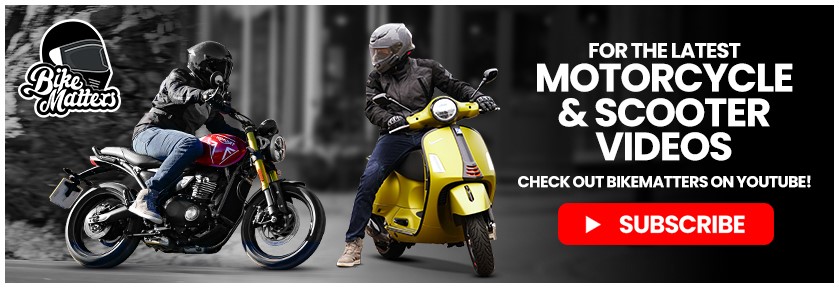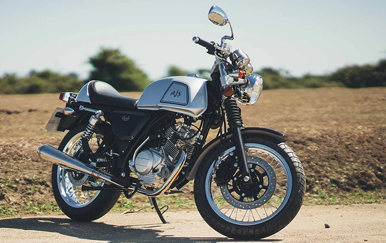A movement that began in the 50s and early 60s, the original Cafe Racers were a generation of motorcycle lovers whose influence on the industry can still be felt today! Originally viewed as figures of rebellion and danger, the Café Racers would become an iconic image of British youth culture.
Fast forward to the modern day, the retro motorcycle scene has enjoyed a huge boom over the last few years. Modern cafe racers like Triumph's Thruxton or Royal Enfield’s Continental GT are all showing why this classic style is timeless.
In this blog, we are going to look at the history of the Cafe Racers, the bikes they rode as well as the effect they had on the modern manufacture of motorcycles.
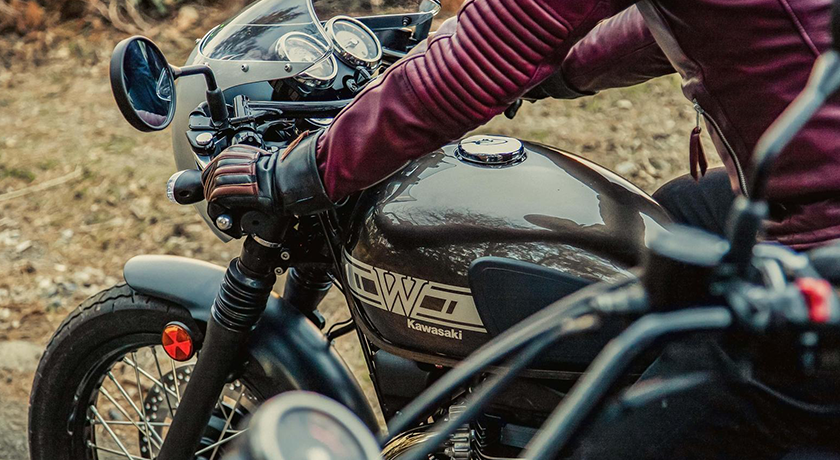
From Rockers to Racers
After the terrible lows of WWII, the youth of 1950s Britain were now enjoying an economic upswing. Jobs and apprenticeships were commonly available, and these youngsters found themselves with money in their pockets and new financial independence that hadn’t really been seen before. On top of this, finance deals were becoming more readily available, and obtaining a vehicle to suit this new independent lifestyle was within their reach.
By the end of the 50s, two main subcultures began to form among the youth - the Mods and the Rockers. Both groups were defined by their taste in music, with the young lovers of Rock n' Roll becoming known as the Rockers, and the Mods' enjoyment of modern Jazz giving them their name too. Another important factor that came to define these groups was their taste in two-wheeled transport. While the Mods gravitated towards trendy Italian scooters, the Rockers' love of speed lead to the creation of the original Cafe Racers.
These two groups would have a notorious rivalry but for this blog we are just going to focus on the Rockers. They wanted speed and excitement, and a motorcycle was one of the most affordable ways to get it.
The Cafe Racers
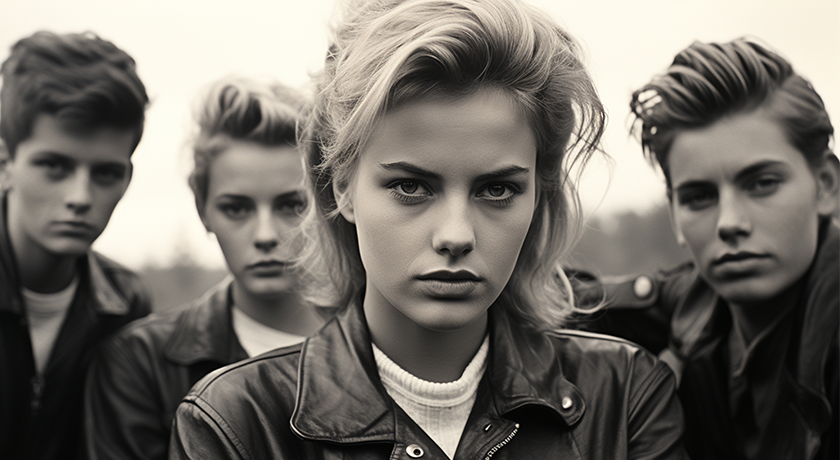
The Rockers' love of music made them gravitate to the popular cafes of London. American Rock n' Roll music wasn't exactly mainstream at the time, and you certainly couldn't listen to it on the radio. One of the only places to hear music from the likes of Elvis Presley or Chuck Berry was on the Jukeboxes found in these cafes. They slicked their hair back in the style of the American Greasers and wore leather jackets like Marlon Brando in 'The Wild One' - the film being banned in Britain only added to the allure of that rebellious image.
Those who could afford it rode motorcycles, with models like the Triumph Tiger T110 (the direct successor to Brando's 6T Thunderbird) becoming very popular, and later in 1959, the first Triumph Bonneville would become a huge part of future custom cafe racer builds.
The Rockers would customise their motorcycles in an attempt to squeeze every last bit of performance out of them. They added clip-on bars and rear set foot pegs and stripped away any unnecessary parts to reduce weight as much as possible. This stripped-down look is one of the key enduring stylistic elements of the cafe racer motorcycle we see today.
When you get a bunch of motorcycle-loving youngsters with an enthusiasm for speed congregating in the same cafes, it inevitably leads to racing. The riders would race between the different cafes attempting feats of bravery or perhaps madness, simply trying to achieve as much speed as possible.
Where exactly the name 'cafe racer' was coined isn't certain but one popular legend claims it began as a derogatory term used by a trucker to describe a group of motorcycle-riding youths in a cafe, who in turn embraced the title and adopted it as their own. Whether this is true or not, the name simply encapsulates what this subculture was all about; Rock n' Roll jukeboxes, fast motorcycles, and youthful rebellion.
The Ton-Up Boys
Perhaps the ultimate achievement for a cafe racer to gain prestige among his peers was to reach the elusive 100mph mark, no easy feat back in the late 50s and early 60s. The bikes of that era were nowhere near as powerful as some of the options we have available today and would require plenty of customisation on the rider's part.
One of the most popular and iconic cafe racer configurations was a combination of the latest Norton Featherbed frame with a Triumph Bonneville engine inside it. This fused the best of both worlds, the raw power potential and reliability of the Triumph, with the groundbreaking handling and agility of Norton's racing frame. This hybrid would become known as the 'Triton', a simple mash-up of both brand names, the fact that it was also the name of a God from Greek mythology is a happy coincidence. Another popular hybrid configuration was the Tribsa, once again using the beloved Triumph engine, but this time housed inside a BSA frame. Not quite as catchy a name but still a formidable machine.
Even after obtaining and customising your ride, doing the ton (British slang for 100mph, also known as tonning up) was not easy. The roads back then were not in the condition we are now accustomed to with gravel patches, potholes and oil spills commonplace. Accidents were frequent and lots of youths lost their lives in pursuit of this milestone. One of the original names this group became known by was 'The Ton-Up Boys' because of this quest and the rare few who did manage it would have pride of place among the cafe racers.
The next generation of motorcycles
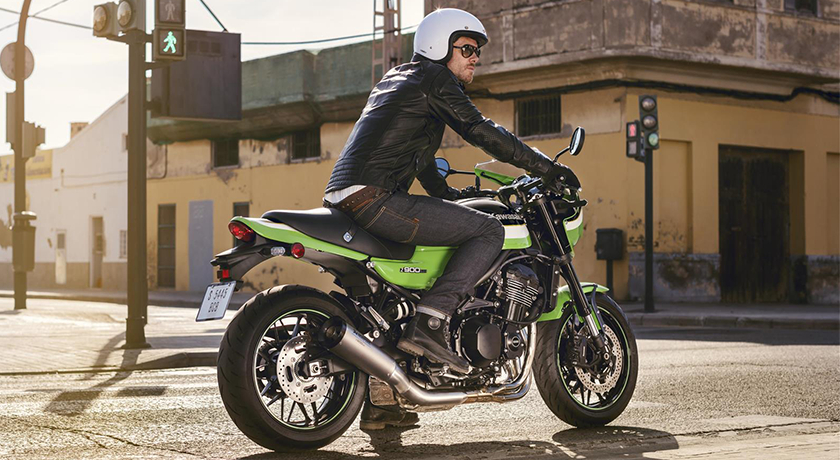
Aside from being an enduring British cultural image, the Ton-up boys had a lasting influence on the manufacture of motorcycles in general. Until then, regular production motorcycles were seen as an affordable mode of transport and nothing more, high performance was strictly reserved for the racetracks. The cafe racers showed that there was an appetite for motorcycles that could be ridden for thrill and enjoyment as well.
One of the first manufacturers to catch on was Royal Enfield, who's original 1965 Continental GT 250 was built with the cafe racers in mind. This was a bike that came factory ready with the kind of specification that would usually have to be customised.
By the 70's a new generation of motorcycles were arriving from overseas, perhaps most notably from Japan, although European manufacturers like Moto Guzzi would also get in on the action with their 1976 Le Mans model. One of the major breakthroughs of this era was the Honda CB750, a motorcycle that would become known as the first true 'superbike'.
Released in 1969 the CB750 was the result of everything Honda had learned from their production and race bikes throughout the 60s. A high-capacity motorcycle equipped with a four cylinder-engine and front disc brake (the first affordable mainstream production bike to feature either), this bike represented a huge leap forward in performance for motorcycles and set the bar for everything that would follow.
The Kawasaki Z-1 arrived in 1972 - another excellent 4-cylinder bike that made use of a cutting-edge double-overhead-camshaft system in a relatively inexpensive production bike. The Yamaha RD350 of 1973 was another big leap forward. While it featured a smaller 2 stroke 347cc engine, it still had a reasonably impressive (for the time) 39bhp power output and more importantly, weighed almost 100 kilos less than the Honda and Kawasaki models.
These affordable Japanese bikes became popular base models for custom cafe racers because they offered high performance at a price point the traditional British manufacturers just couldn't compete with.
The modern classic
As we entered the 80s and 90s performance motorcycles became much more mainstream. We saw the rise of the modern sports bike which came with rear sets, clip-ons, and powerful engines as standard. It was no longer necessary to customise your racer, they came ready from the factories. As a result, cafe racers became more of a style choice, rather than purely to achieve speed.
In the modern era, the perception of the cafe racer has changed a great deal. No longer figures of danger and suspicion, the cafe racers are a nostalgic piece of British history and their stripped-down motorcycle style has become the timeless choice of trendy bikers all over the world.
Perhaps the reason these bikes have endured for as long as they have is down to their mix of understated but attractive looks and thrilling ride performance, a combination that is hard to beat. With manufacturers now producing these bikes as standard too, it's never been easier to get your hands on an excellent retro racer. All the looks and spirit of the originals, now bolstered with cutting-edge technology and comfort.
The ton-up boys were simply ahead of their time, pursuing their love of performance motorcycles before the world was ready for it and they were naive to the terrible dangers they subjected themselves to. Despite the young lives that were lost in those early days, the legacy of the cafe racers will live forever.
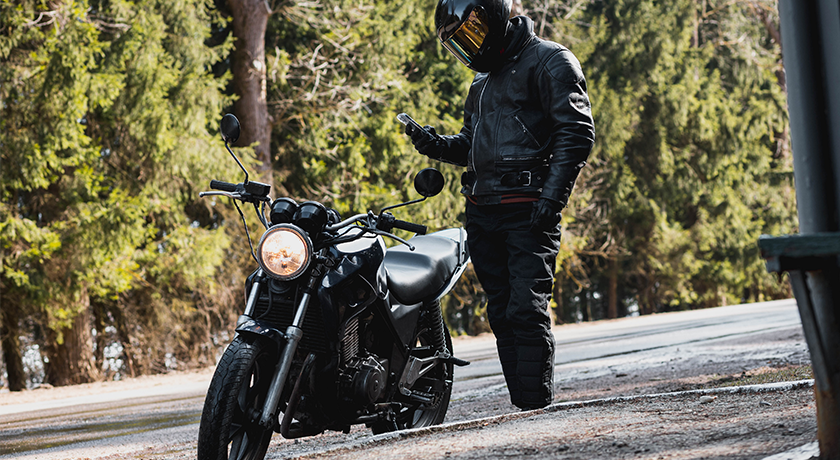
The Last Stop!
So there you have it, I hope you enjoyed my rundown on the history behind the cafe racer...
Last but not least, if you have your very own cafe racer you need to insure - make sure to get a motorcycle insurance quotation direct with Lexham!

